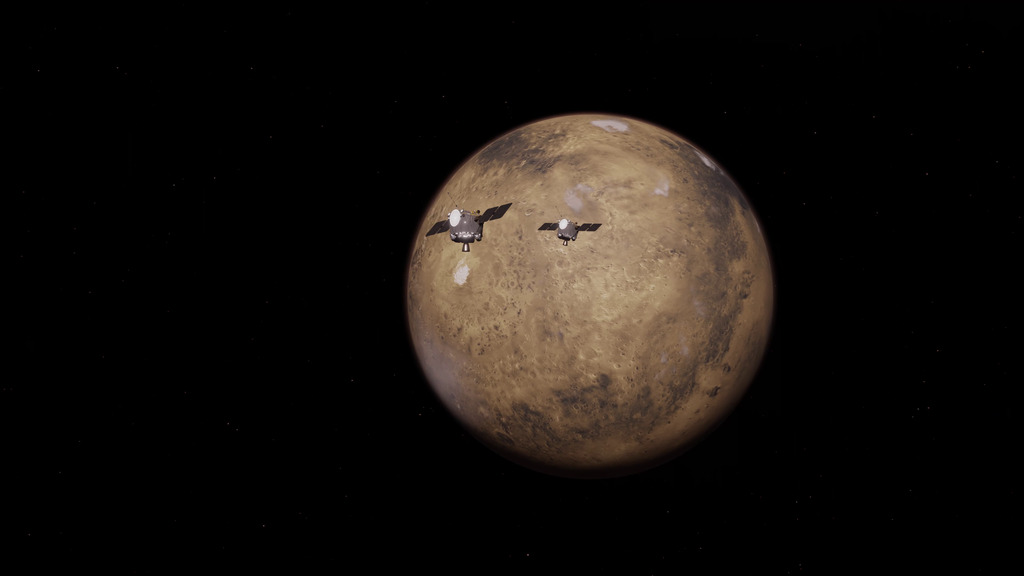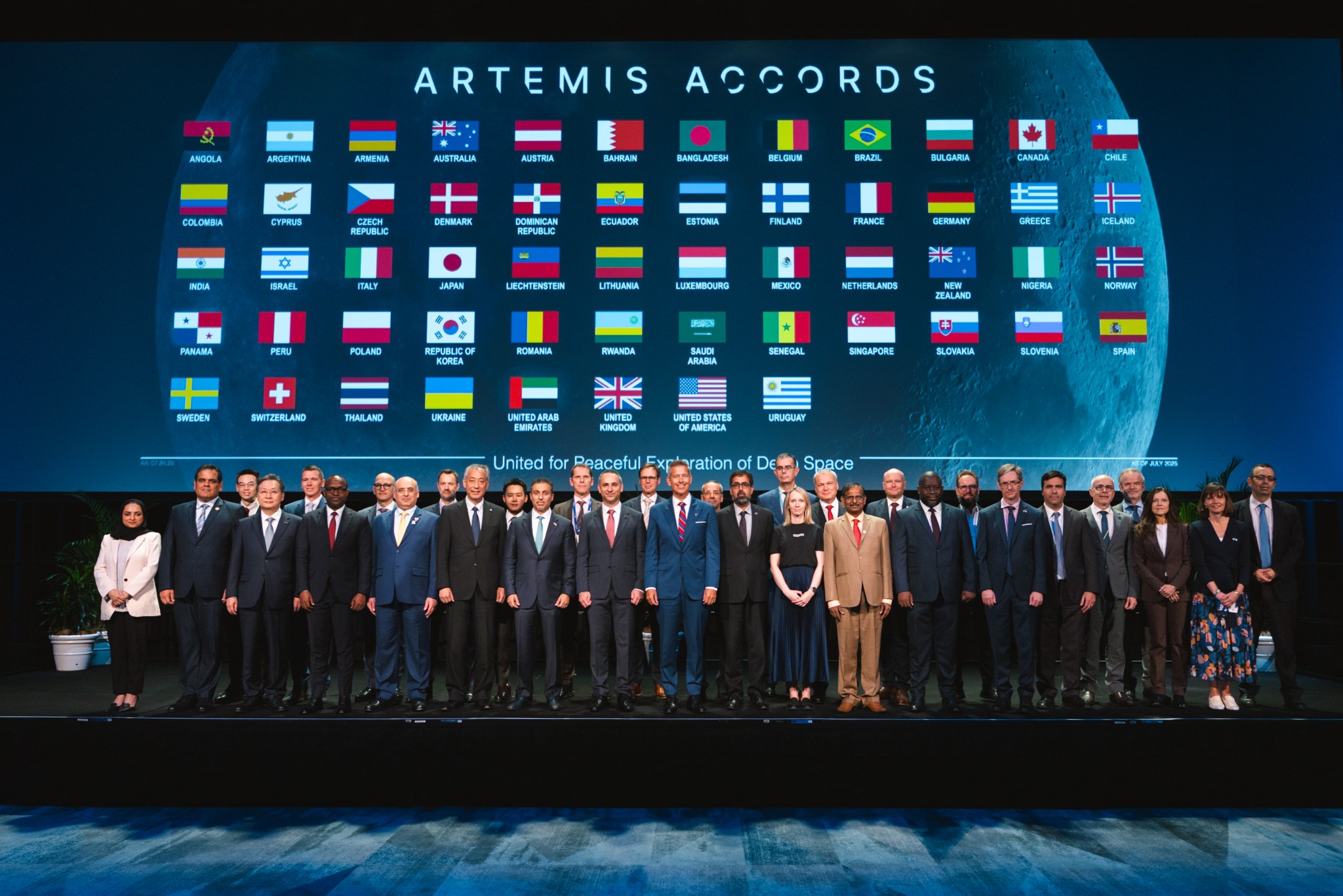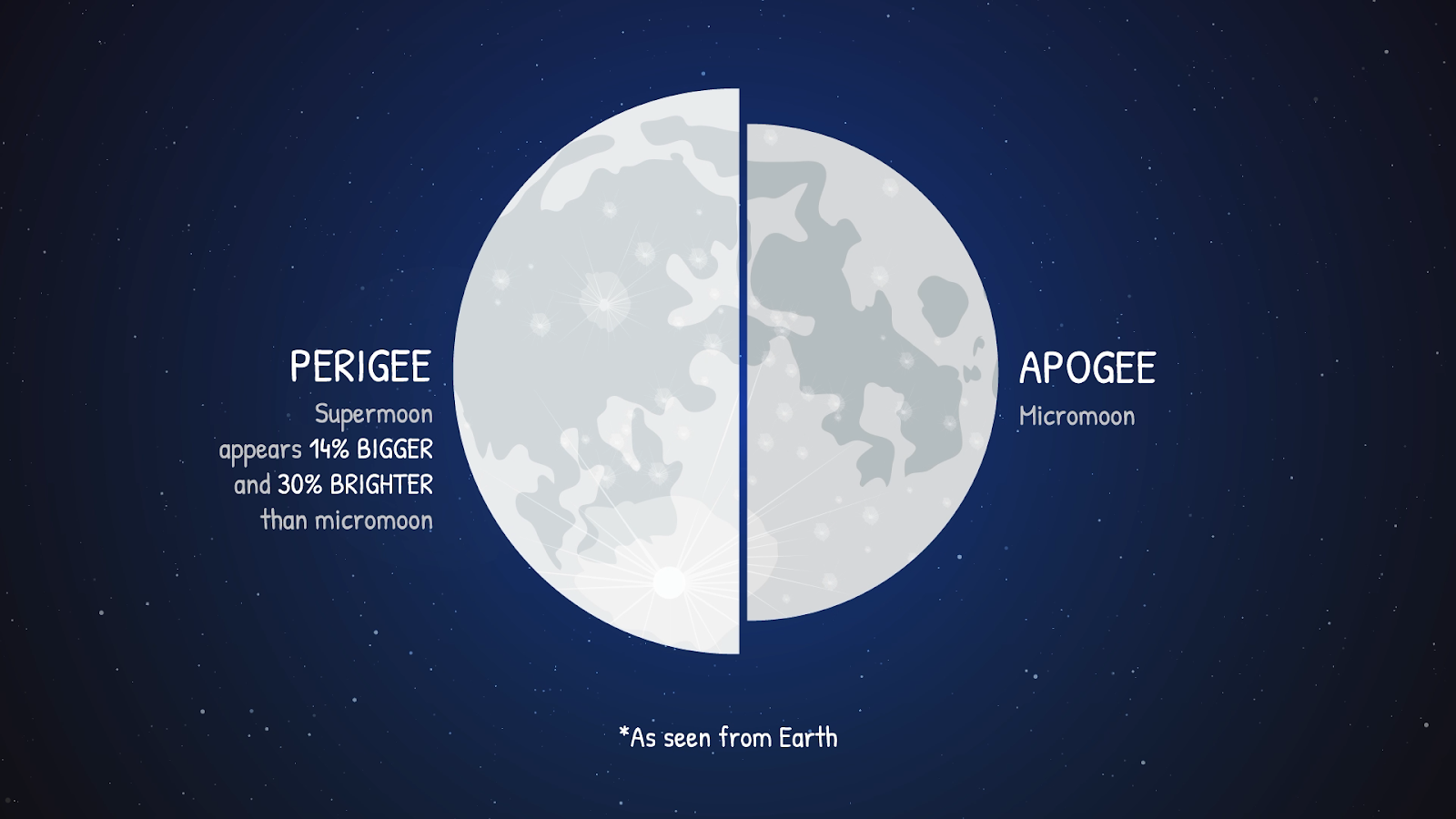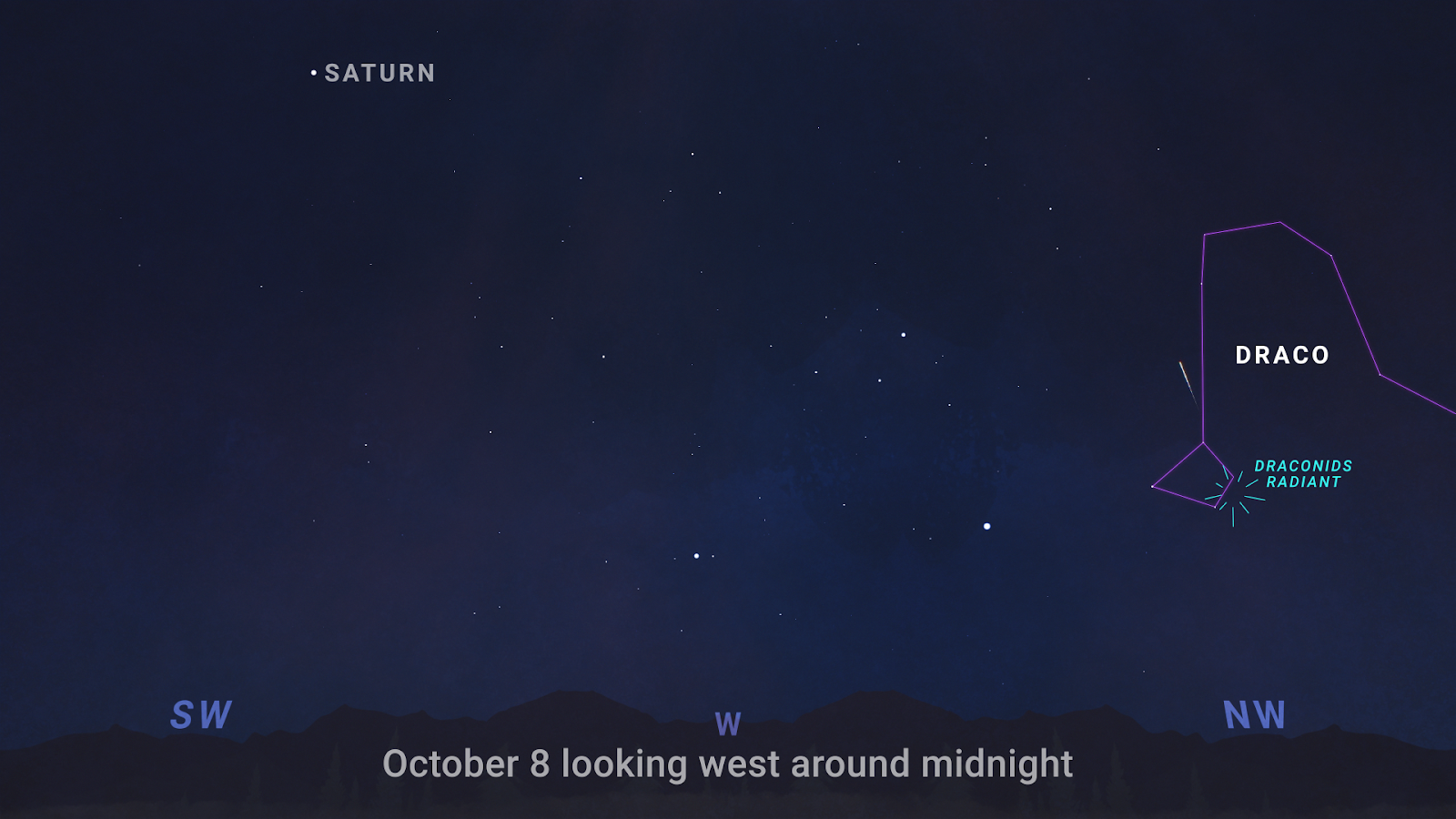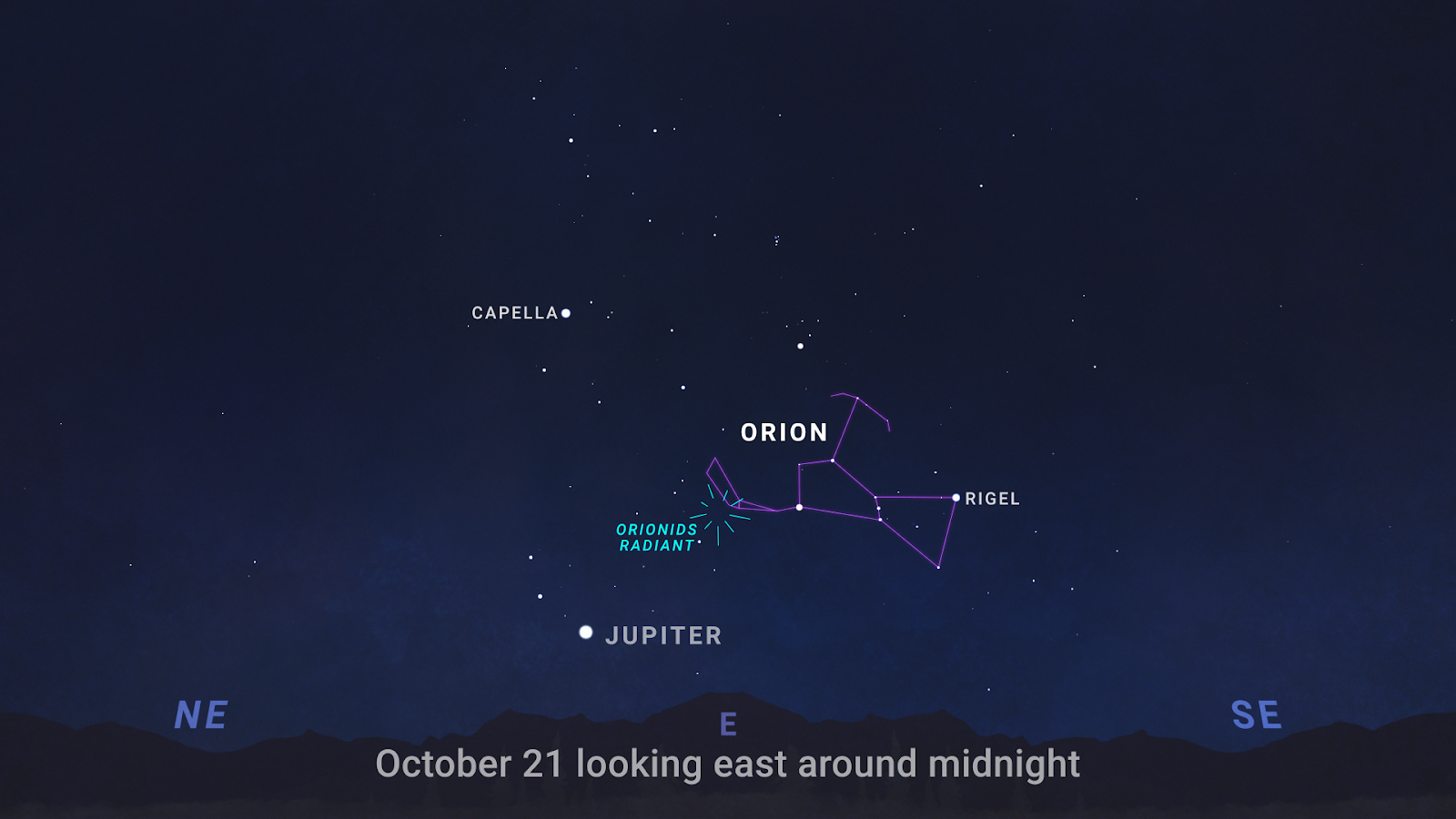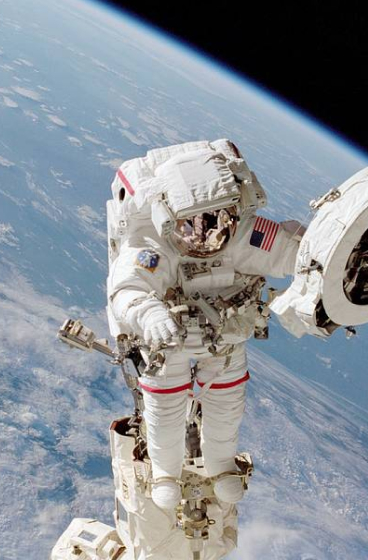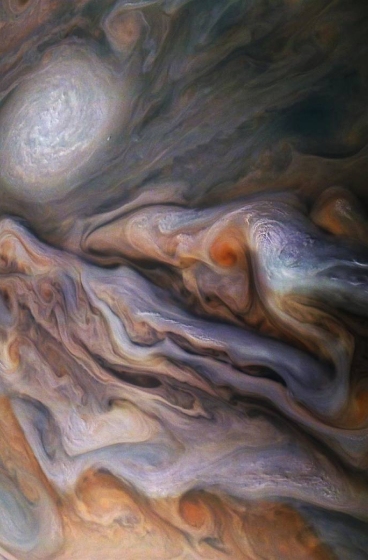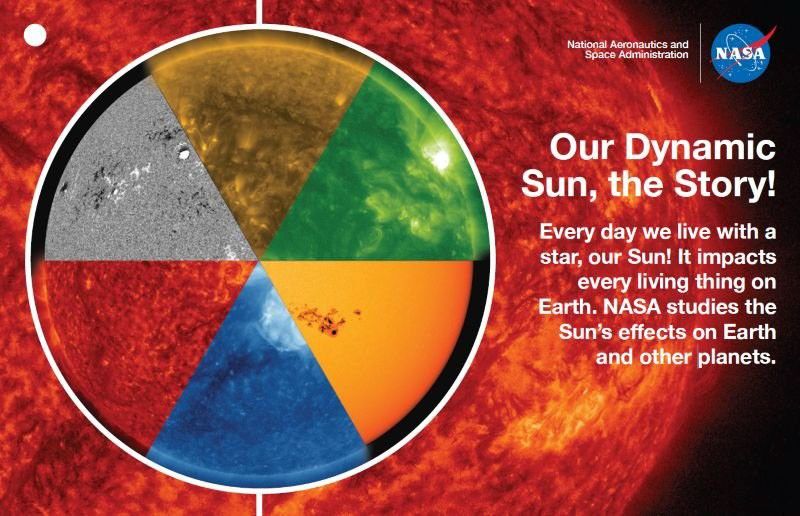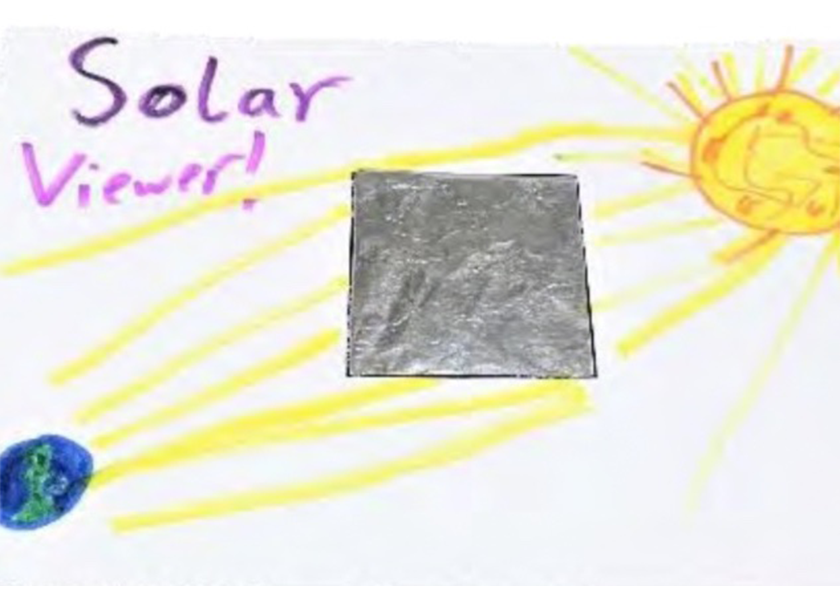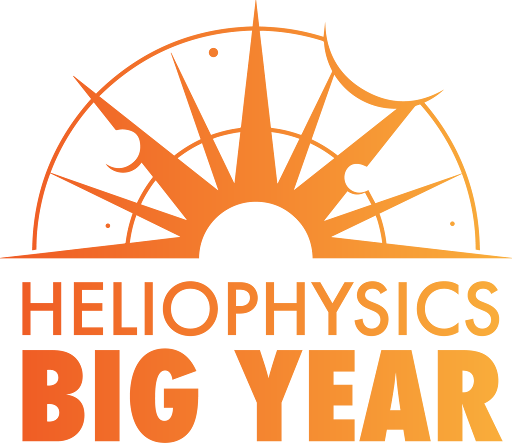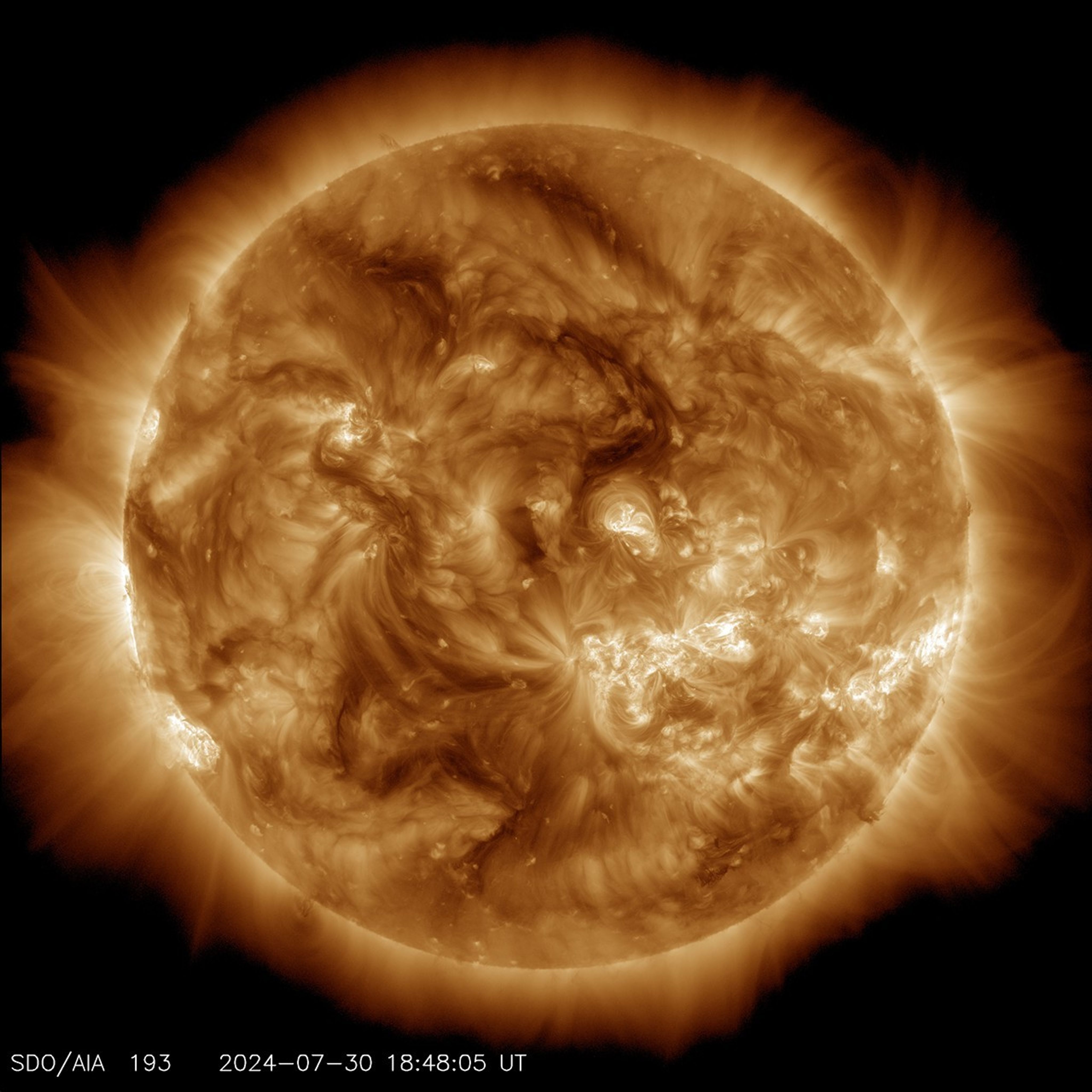📰 Trending Topics
Google News - Trending
Google, Tesla, Samsung: Trending stocks - Yahoo Finance
2025-11-03 13:09
Google News - Technology
With two new encouraging signs, can we finally believe in the new Siri? - 9to5Mac
2025-11-03 12:17
- With two new encouraging signs, can we finally believe in the new Siri? 9to5Mac
- New Version of Siri to 'Lean' on Google Gemini MacRumors
- Tim Cook says Apple is open to M&A on the AI front TechCrunch
- Tim Cook says more AIs are coming to Apple Intelligence The Verge
- Apple to ‘lean’ on Google for Siri revamp, Gemini set to be the brain behind AI assistant: Report livemint.com
A Doctor at Apple Shares 9 Hidden Apple Watch Health Features - CNET
2025-11-03 08:58
- A Doctor at Apple Shares 9 Hidden Apple Watch Health Features CNET
- Enhance Your Apple Watch Experience With These 8 Expert-Approved Tips CNET
- Wearing Technology on Your Wrist DIVINE.ca
- STOP Missing Out! The First 24 Settings & Hacks Your Apple Watch 11 Needs Geeky Gadgets
- Apple Watch Series 11 Review Pune Mirror
AMD Promises Continued Driver Support For RDNA 1 “RX 5000” & RDNA 2 “RX 6000” GPUs - Wccftech
2025-11-03 04:10
- AMD Promises Continued Driver Support For RDNA 1 “RX 5000” & RDNA 2 “RX 6000” GPUs Wccftech
- AMD clarifies its clarifications on controversial RDNA 1 and 2 driver note — company will continue game optimization support after all Tom's Hardware
- AMD clarifies RX 5000 and RX 6000 GPUs will still get game-specific optimisations despite going into 'maintenance mode' PC Gamer
- AMD confirms its older GPUs will still support new games despite focus on new features for RDNA 3 and RDNA 4 PC Guide
- AMD just shot itself in the foot, and I have questions about AM5's long-term support XDA
OnePlus 15 and Ace 6 debut in China, Moto Edge 70 is official, Week 44 in review - GSMArena.com news - GSMArena.com
2025-11-02 14:33
- OnePlus 15 and Ace 6 debut in China, Moto Edge 70 is official, Week 44 in review - GSMArena.com news GSMArena.com
- OnePlus 15's Global Launch Is Coming Nov. 13 CNET
- OnePlus 15 is here: One step forward, two steps back, but still better than your Galaxy Android Authority
- Why I’m more excited about the OnePlus 15 than the Galaxy S26 PhoneArena
- I captured 100 photos with the OnePlus 15 and the results speak for themselves Digital Trends
Google says it won't fix annoying bug on Pixel 9 and Pixel 10 series models - PhoneArena
2025-11-03 02:48
- Google says it won't fix annoying bug on Pixel 9 and Pixel 10 series models PhoneArena
- Google Pixel 10 speakerphone toggle delay still persists months after launch PiunikaWeb
- It's almost 2026, and Pixels still don't seem to deliver notifications on time Android Authority
- Pixel Notification Delays Continue To Fester As New Reports Surface findarticles.com
- Pixel 9 and 10 Users Stuck with Broken Speaker Button After Google Refuses Fix Phandroid
NASA - Breaking News
October’s Night Sky Notes: Let’s Go, LIGO!
2025-10-01 02:22
October’s Night Sky Notes: Let’s Go, LIGO!
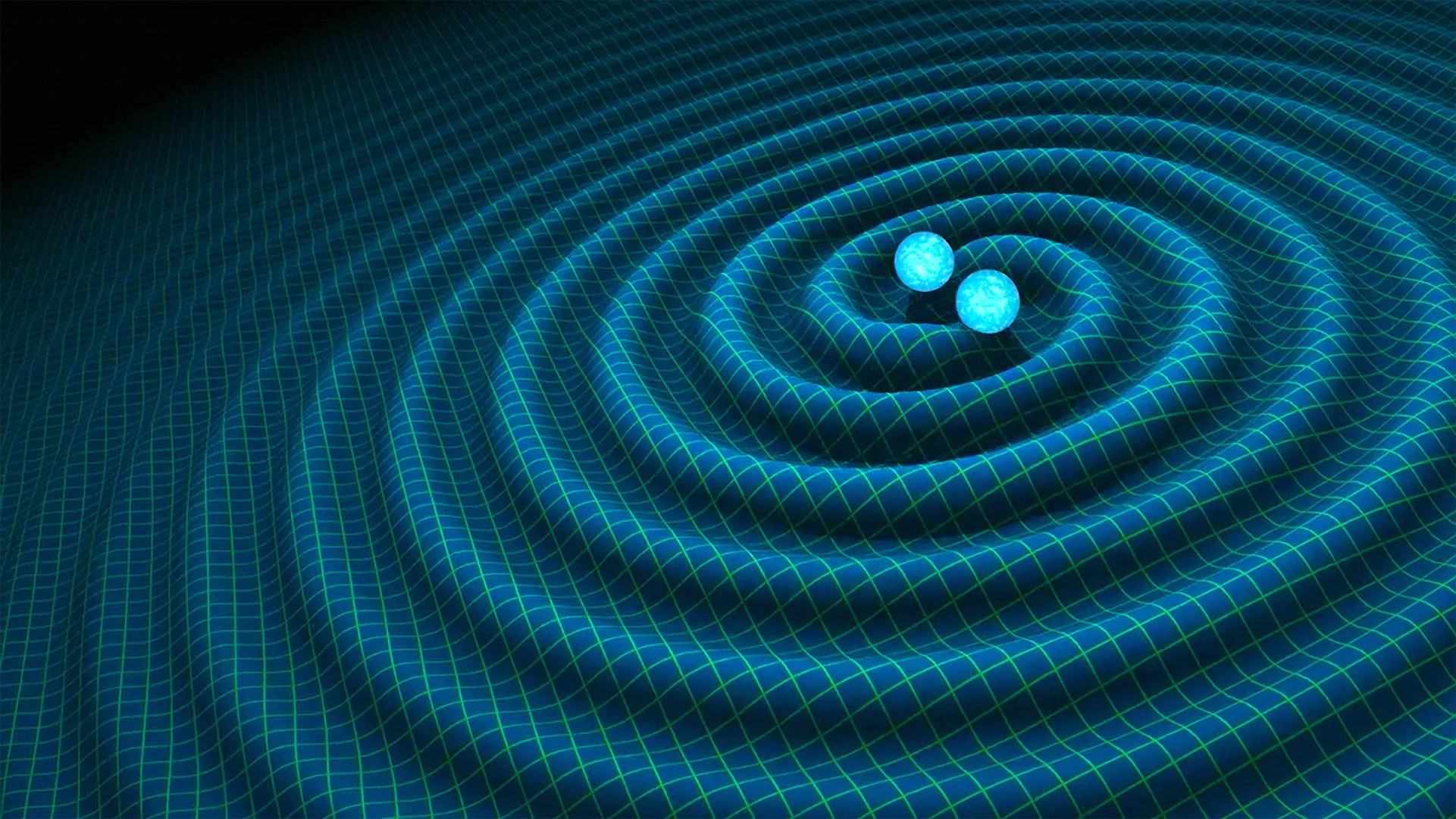
R. Hurt/Caltech-JPL
by Kat Troche of the Astronomical Society of the Pacific
September 2025 marks ten years since the first direct detection of gravitational waves as predicted by Albert Einstein’s 1916 theory of General Relativity. These invisible ripples in space were first directly detected by the Laser Interferometer Gravitational-Wave Observatory (LIGO). Traveling at the speed of light (~186,000 miles per second), these waves stretch and squeeze the fabric of space itself, changing the distance between objects as they pass.
Waves In Space
Gravitational waves are created when massive objects accelerate in space, especially in violent events. LIGO detected the first gravitational waves when two black holes, orbiting one another, finally merged, creating ripples in space-time. But these waves are not exclusive to black holes. If a star were to go supernova, it could produce the same effect. Neutron stars can also create these waves for various reasons. While these waves are invisible to the human eye, this animation from NASA’s Science Visualization Studio shows the merger of two black holes and the waves they create in the process.
How It Works
A gravitational wave observatory, like LIGO, is built with two tunnels, each approximately 2.5 miles long, arranged in an “L” shape. At the end of each tunnel, a highly polished 40 kg mirror (about 16 inches across) is mounted; this will reflect the laser beam that is sent from the observatory. A laser beam is sent from the observatory room and split into two, with equal parts traveling down each tunnel, bouncing off the mirrors at the end. When the beams return, they are recombined. If the arm lengths are perfectly equal, the light waves cancel out in just the right way, producing darkness at the detector. But if a gravitational wave passes, it slightly stretches one arm while squeezing the other, so the returning beams no longer cancel perfectly, creating a flicker of light that reveals the wave’s presence.
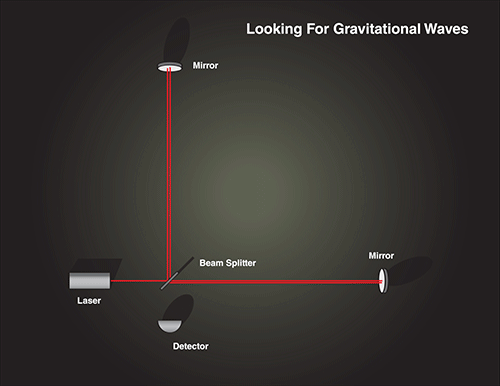
The actual detection happens at the point of recombination, when even a minuscule stretching of one arm and squeezing of the other changes how long it takes the laser beams to return. This difference produces a measurable shift in the interference pattern. To be certain that the signal is real and not local noise, both LIGO observatories — one in Washington State (LIGO Hanford) and the other in Louisiana (LIGO Livingston) — must record the same pattern within milliseconds. When they do, it’s confirmation of a gravitational wave rippling through Earth. We don’t feel these waves as they pass through our planet, but we now have a method of detecting them!
Get Involved
With the help of two additional gravitational-wave observatories, VIRGO and KAGRA, there have been 300 black hole mergers detected in the past decade; some of which are confirmed, while others await further study.
While the average person may not have a laser interferometer lying around in the backyard, you can help with two projects geared toward detecting gravitational waves and the black holes that contribute to them:
- Black Hole Hunters: Using data from the TESS satellite, you would study graphs of how the brightness of stars changes over time, looking for an effect called gravitational microlensing. This lensing effect can indicate that a massive object has passed in front of a star, such as a black hole.
- Gravity Spy: You can help LIGO scientists with their gravitational wave research by looking for glitches that may mimic gravitational waves. By sorting out the mimics, we can train algorithms on how to detect the real thing.
You can also use gelatin, magnetic marbles, and a small mirror for a more hands-on demonstration on how gravitational waves move through space-time with JPL’s Dropping In With Gravitational Waves activity!
NASA, Blue Origin Invite Media to Attend Mars Mission Launch
2025-09-30 22:00
NASA and Blue Origin are reopening media accreditation for the launch of the agency’s ESCAPADE (Escape and Plasma Acceleration and Dynamics Explorers) mission. The twin ESCAPADE spacecraft will study the solar wind’s interaction with Mars, providing insight into the planet’s real-time response to space weather and how solar activity drives atmospheric escape. This will be the second launch of Blue Origin’s New Glenn rocket.
Media interested in covering ESCAPADE launch activities must apply for media credentials. Media who previously applied for media credentials for the ESCAPADE launch do not need to reapply.
U.S. media and U.S. citizens representing international media must apply by 11:59 p.m. EDT on Monday, Oct. 13. Media accreditation requests should be submitted online to: https://media.ksc.nasa.gov.
A copy of NASA’s media accreditation policy is available online. For questions about accreditation, please email: ksc-media-accreditat@mail.nasa.gov. For other mission questions, please contact NASA Kennedy’s newsroom: 321-867-2468.
Blue Origin is targeting later this fall for the launch of New Glenn’s second mission (NG-2) from Space Launch Complex 36 at Cape Canaveral Space Force Station in Florida. Accredited media will have the opportunity to participate in prelaunch media activities and cover the launch. Once a specific launch date is targeted, NASA and Blue Origin will communicate additional details regarding the media event schedule.
NASA will post updates on launch preparations for the twin Martian orbiters on the ESCAPADE blog.
The ESCAPADE mission is part of the NASA Small Innovative Missions for Planetary Exploration program and is funded by the agency’s Heliophysics Division. The mission is led by the University of California, Berkeley Space Sciences Laboratory, and Rocket Lab designed the spacecraft. The agency’s Launch Services Program, based at NASA’s Kennedy Space Center in Florida, secured launch services under the VADR (Venture-class Acquisition of Dedicated and Rideshare) contract.
To learn more about ESCAPADE, visit:
https://science.nasa.gov/mission/escapade
-end-
Abbey Interrante
Headquarters, Washington
301-201-0124
abbey.a.interrante@nasa.gov
Leejay Lockhart
Kennedy Space Center, Florida
321-747-8310
leejay.lockhart@nasa.gov
NASA, International Partners Deepen Commitment to Artemis Accords
2025-09-30 21:23
NASA, along with leaders from global space agencies and government representatives worldwide, convened on Monday to further the implementation of the Artemis Accords — practical principles designed to guide the responsible exploration of the Moon, Mars, and beyond.
The meeting was held during the 76th International Astronautical Congress (IAC) taking place in Sydney. In opening remarks, acting NASA Administrator Sean Duffy highlighted the five-year anniversary of the Artemis Accords next month.
“When President Trump launched the Artemis Accords in his first term, he made sure American values would lead the way – bringing together a coalition of nations to set the rules of the road in space and ensure exploration remains peaceful. After five years, the coalition is stronger than ever. This is critical as we seek to beat China to the Moon, not just to leave footprints, but this time to stay,” said Duffy.
The United States, led by NASA and the U.S. Department of State, signed the accords on Oct. 13, 2020, with seven other founding nations. The accords were created in response to the growing global interest in lunar activities by governments and private companies. They now comprise 56 country signatories — nearly 30% of the world’s countries.
The event was co-chaired by NASA, the Australian Space Agency, and the UAE Space Agency. Dozens of nations were represented, creating the foundation for future space exploration for the Golden Age of exploration and innovation.
“Australia is a proud founding signatory of the Artemis Accords and is focused on supporting new signatories in the Indo-Pacific region,” said Head of Australian Space Agency Enrico Palermo. “The purpose of the accords is as important — if not more important — as it was when first established. This annual gathering of principals at IAC 2025 is a key opportunity to reaffirm our collective commitment to exploring the Moon, Mars and beyond in a peaceful, safe, and sustainable way.”
During the meeting, leaders discussed recommendations for non-interference in each other’s space activities including transparency on expected launch dates, general nature of activities, and landing locations. They also discussed orbital debris mitigation and disposal management, interoperability of systems for safer and more efficient operations, and the release of scientific data.
In May 2025, the United Arab Emirates hosted an Artemis Accords workshop focused on topics, such as non-interference and space object registration and reporting beyond Earth orbit.
“Through our active participation in the Artemis Accords and by organizing specialised workshops, we aim to reinforce the principles of transparency, sustainability, and innovation in space activities. We are committed to strengthening international partnerships and facilitating the exchange of expertise, thereby contributing to the development of a robust global framework for safe and responsible space exploration, while opening new frontiers for scientific research,” said UAE Minister of Sports and Chairman of UAE Space Agency Ahmad Belhoul Al Falasi. “This reflects the UAE’s unwavering commitment to enhancing international cooperation in space exploration and promoting the peaceful use of space.”
More countries are expected to sign the Artemis Accords in the months and years ahead, as NASA continues its work to establish a safe, peaceful, and prosperous future in space.
Learn more about the Artemis Accords at:
https://www.nasa.gov/artemis-accords
-end-
Bethany Stevens / Elizabeth Shaw
Headquarters, Washington
202-358-1600
bethany.c.stevens@nasa.gov / elizabeth.a.shaw@nasa.gov
What’s Up: October 2025 Skywatching Tips from NASA
2025-09-30 20:58
A supermoon, and meteor showers from the Draconids and Orionids
A supermoon takes over the sky, the Draconid meteor shower peeks through, and the Orionid meteor shower shines bright.
Skywatching Highlights
- Oct. 6: The October supermoon
- Oct. 6-10: The Draconid meteor shower
- Oct. 21: The Orionid meteor shower peaks (full duration Sept. 26 – Nov. 22)
Transcript
What’s Up for October? A Supermoon takes over, the Draconid meteor shower peeks through, and the Orionid meteors sparkle across the night sky.
The evening of October 6, look up and be amazed as the full moon is bigger and brighter because – it’s a supermoon!
This evening, the moon could appear to be about 30% brighter and up to 14% larger than a typical full moon. But why?
Supermoons happen when a new moon or a full moon coincides with “perigee,” which is when the moon is at its closest to Earth all month.
So this is an exceptionally close full moon! Which explains its spectacular appearance.
And what timing – while the supermoon appears on October 6th, just a couple of days before on October 4th is “International Observe the Moon Night”!
It’s an annual, worldwide event when Moon enthusiasts come together to enjoy our natural satellite.You can attend or host a moon-viewing party, or simply observe the Moon from wherever you are.
So look up, and celebrate the moon along with people all around the world!
The supermoon will light up the sky on October 6th, but if you luck into some dark sky between October 6th and 10th, you might witness the first of two October meteor showers – the Draconids!
The Draconid meteor shower comes from debris trailing the comet 21P Giacobini-Zinner burning up in Earth’s atmosphere
These meteors originate from nearby the head of the constellation Draco the dragon in the northern sky and the shower can produce up to 10 meteors per hour!
The Draconids peak around October 8th, but if you don’t see any, you can always blame the bright supermoon and wait a few weeks until the next meteor shower – the Orionids!
The Orionid meteor shower, peaking October 21, is set to put on a spectacular show, shooting about 20 meteors per hour across the night sky.
This meteor shower happens when Earth travels through the debris trailing behind Halley’s Comet and it burns up in our atmosphere.
The full duration of the meteor shower stretches from September 26 to November 22, but your best bet to see meteors is on October 21 before midnight until around 2 am.
This is because, not only is this night the shower’s peak, it is also the October new moon, meaning the moon will be between the Earth and the Sun, making it dark and invisible to us.
With a moonless sky, you’re much more likely to catch a fireball careening through the night.
So find a dark location after the sun has set, look to the southeast sky (if you’re in the northern hemisphere) and the northeast (if you’re in the southern hemisphere) and enjoy!
Orionid meteors appear to come from the direction of the Orion constellation but you might catch them all across the sky.
Here are the phases of the Moon for October.
You can stay up to date on all of NASA’s missions exploring the solar system and beyond at science.nasa.gov.
I’m Chelsea Gohd from NASA’s Jet Propulsion Laboratory, and that’s What’s Up for this month.
Helio Highlights: October 2025
2025-09-30 19:51
5 min read
Helio Highlights: October 2025
Helio Highlights: October 2025

NASA/Keegan Barber
The Sun and Our Lives
On a clear night, you might see thousands of stars in the sky. Most of these stars are dozens or hundreds of light years away from us. A light year is the distance a beam of light travels in a year: about 5.88 trillion miles (9.46 trillion kilometers). This means that for those stars we see at night, it takes their light, which travels at about 186,000 miles per second (or about 300 thousand kilometers per second), dozens or hundreds of years to reach us.
But in the daytime, we only see one star: the Sun. It dominates the daytime sky because it is so close – about 93 million miles (or 150 million kilometers) away. That distance is also called one astronomical unit, and its another unit of measurement astronomers use to record distance in space. But even if 1 astronomical unit seems like a long way, it’s still about 270 thousand times closer than Alpha Centauri, the next nearest star system.
The Sun isn’t just close – it’s also gigantic! The Sun is large enough to fit more than a million Earths inside it, and has more mass than 330 thousand Earths put together. Its light also provides the energy which allows life as we know it to flourish. For these reasons, the Sun is a powerful presence in our lives. We all have a relationship with the Sun, so knowing about it, and about the benefits and hazards of its presence, is essential.
Teaching About the Sun
Autumn is when most students in the United States return for a new school year after summer vacation. This back-to-school time offers a wonderful opportunity to reach students fresh off of a few months of fun in the Sun and capture their imaginations with new information about how our native star works and how it impacts their lives.
To that end, NASA conducts efforts to educate and inform students and educators about the Sun, its features, and the ways it impacts our lives. NASA’s Heliophysics Education Activation Team (HEAT) teaches people of all ages about the Sun, covering everything from how to safely view an eclipse to how to mitigate the effects of geomagnetic storms.
.jpg?w=5438&h=3638&fit=clip&crop=faces%2Cfocalpoint)
This often means tailoring lesson plans for educators. By connecting NASA scientists who study Heliophysics with education specialists who align the material to K-12 content standards, HEAT gets Heliophysics out of the lab and into the classroom. Making Sun science accessible lets learners of all ages and backgrounds get involved in and excited about the discovery, and instills a lifelong thirst for knowledge that builds the next generation of scientists.
Since 2007, NASA’s Living With a Star (LWS) program and the University Corporation for Atmospheric Research’s Cooperative Programs for the Advancement of Earth System Science (CPAESS) have cooperated to offer the Heliophysics Summer School program for doctoral students and postdoctoral scholars. This program aims to foster heliophysics as an integrated science, teaching a new generation of researchers to engage in cross-disciplinary communication while they are still in the early days of their career.
One Way to Get Involved
As part of its efforts to increase awareness of the scientific and social importance of heliophysics, and to both inspire future scientists and spark breakthroughs in heliophysics as a discipline, the NASA Heliophysics Education Activation Team (NASA HEAT) is working on a slate of educational materials designed to get students involved with real-world mission data.
My NASA Data, in collaboration with NASA HEAT, has released a new set of resources for educators centered around space weather. My NASA Data supports the use of authentic NASA data as part of classroom learning materials. These materials include lesson plans, mini-lessons (shorter activities for quick engagement), student-facing web-based interactives, and a longer “story map,” which deepens the investigation of the phenomenon over multiple class periods.
These resources are designed to engage learners with data and observations collected during both past and ongoing missions, including the European Space Agency’s Solar Orbiter, NASA’s Parker Solar Probe and Solar Dynamics Observatory (SDO), and more.
One example of this is the educational material published to support outreach efforts focusing on the 2023 and 2024 American solar eclipses. These materials allowed learners to collect their own data on cloud and temperature observations during the eclipses with the GLOBE Observer Eclipse tool. This gave them the chance to participate in the scientific process by contributing meaningfully to our understanding of the Earth system and global environment.
New Ways to Engage
Groups like HEAT don’t just spark interest in science for the sake of inspiring the next generation of heliophysicists. Just like amateur astronomers can bring in a lot more data than their professional counterparts, citizen scientists can do a lot to support the same institutions that may have inspired them to take up the practice of citizen science. This can mean anything from helping to track sunspots to reporting on the effects of space weather events.

These enthusiasts are also adept at sharing knowledge of heliophysics. Even just one person inspired to buy a telescope with the right solar filter (international standard ISO 12312-2), set it up in a park, and teach their neighbors about the Sun can do amazing work, and there are a lot more of them than there are professional scientists. That means these amateur heliophysicists can reach farther than even the best official outreach.
Whether they take place in the classroom, at conferences, or in online lectures, the efforts of science communicators are a vital part of the work done at NASA. Just as scientists make new discoveries, these writers, teachers, audio and video producers, and outreach specialists are passionate about making those discoveries accessible to the public.
All of this work helps to inspire the scientists of tomorrow, and to instill wonder in the citizen scientists of today. The Sun is a constant and magnificent presence in our lives, and it offers plenty of reasons to be inspired, both now and in the future.
Additional Resources
Lesson Plans & Educator Guides
Interactive Resources
Webinars & Slide Decks
TechCrunch - Latest
OpenAI and Amazon ink $38B cloud computing deal
2025-11-03 15:21
Microsoft’s $15.2B UAE investment turns Gulf State into test case for US AI diplomacy
2025-11-03 14:22
Microsoft inks $9.7B deal with Australia’s IREN for AI cloud capacity
2025-11-03 14:04
LG founder’s grandson, production firm partner up to bring AI to filmmaking
2025-11-03 14:00
Kevin Rose’s simple test for AI hardware — would you want to punch someone in the face who’s wearing it?
2025-11-03 01:54

